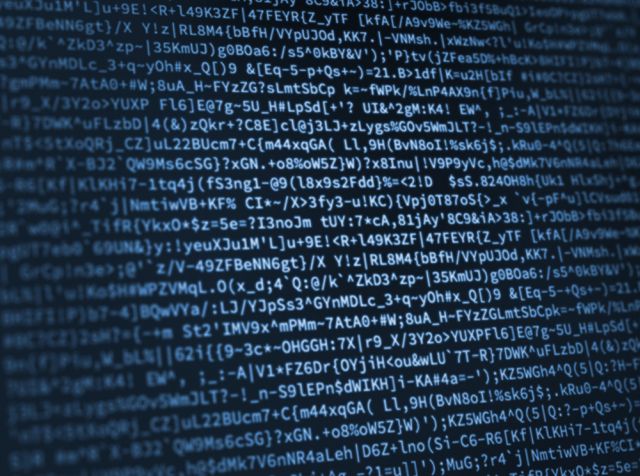Encryption serves as a bulwark against unauthorized access, safeguarding sensitive information across the digital landscape. Among the various encryption classifications, military-grade encryption stands out for its superiority and rigorous standards. The term itself evokes images of complex algorithms and specialized applications designed to protect national security and confidential military operations. But what does military-grade encryption truly entail? To unravel this question, one must first explore its definition, historical context, methodologies, and applications.
Definition of Military-Grade Encryption
At its core, military-grade encryption refers to cryptographic protocols that comply with certain established standards for security. These standards are often defined by governmental organizations, particularly the National Institute of Standards and Technology (NIST) in the U.S. The term signifies that the encryption can withstand extensive attacks and unauthorized attempts to decode the protected data. One prominent example of military-grade encryption is the Advanced Encryption Standard (AES), which employs a symmetrically structured key that ensures utmost confidentiality.
Historical Context
The evolution of encryption is as storied as the history of warfare itself. Cryptography dates back thousands of years, initially used by ancient civilizations. However, modern encryption—and specifically military-grade encryption—can trace its roots to the cryptographic advancements made during World War II. The development of the Enigma machine by the Germans marked a significant turning point, leading to increased efforts in code-breaking. The ensuing Cold War spurred further innovations, necessitating more sophisticated means of communication and encryption among military entities worldwide.
Methodologies of Military-Grade Encryption
Military-grade encryption encompasses various methodologies, each possessing unique characteristics. Primarily, it involves two main types of encryptions: symmetric-key and asymmetric-key. Symmetric-key encryption, as exemplified by AES, utilizes a single key for both encryption and decryption processes. This type is advantageous due to its simplicity and computational efficiency, making it suitable for rapid data exchange but requiring stringent key management protocols.
Conversely, asymmetric-key encryption employs a pair of keys: one public and one private. While the public key encrypts the data, only the corresponding private key can decrypt it. This dual-key methodology enhances security but often necessitates a more complex infrastructure. Both methodologies, while robust, can be vulnerable to distinct forms of attacks, making ongoing advancements in algorithmic development imperative.
Standards and Compliance
To be deemed military-grade, encryption solutions must adhere to specific standards set forth by regulatory bodies. The Federal Information Processing Standards (FIPS) outline the processes involved in achieving compliance for cryptographic modules in federal information systems. Many organizations, especially those working with government contracts, often seek FIPS validation to demonstrate their commitment to high security. Additionally, considerations around key length and complexity are essential, with longer keys generally correlating to higher security levels. For instance, a 256-bit key, while common in military applications, presents an exponentially harder challenge for potential adversaries compared to shorter keys.
Applications in National Security
Military-grade encryption finds its primary applications within national security, protecting sensitive communications between military personnel, government agencies, and allied forces. It is pivotal in safeguarding classified information, operational plans, and intelligence reports. Whether through secure emails, protected communication channels, or encrypted data storage, the efficacy of military-grade encryption cannot be overstated.
Beyond conventional military applications, the integration of military-grade encryption within civilian sectors is becoming increasingly prominent. Industries such as banking, healthcare, and technology are adopting similar standards to protect sensitive data from cyber threats. As cyber warfare escalates, the lessons learned and techniques developed in military settings transition to civilian domains, underscoring the critical need for robust encryption practices.
Challenges and Future Directions
Despite its fortifications, military-grade encryption is not infallible. With the advent of quantum computing, existing encryption methods face unprecedented challenges. Quantum computers possess the potential to decode even the most sophisticated algorithms currently in use, prompting a race toward quantum-resistant technologies. Research into lattice-based cryptography and other novel methods is gaining traction as potential responses to such threats.
Additionally, balancing encryption strength with usability remains an ongoing dilemma. Excessively stringent encryption protocols can impede operational efficiency, especially in time-sensitive military environments. Striking a harmonious balance whereby security does not detract from functionality will be essential as military operations adapt to the rapidly evolving technological landscape.
Conclusion
In summation, military-grade encryption encapsulates a comprehensive, multifaceted approach to data security, underpinned by historical precedents and stringent methodologies. Its significance extends beyond military confines, permeating into civilian applications as a response to the ever-growing cyber threat landscape. As technology advances, the evolution of military-grade encryption will likely necessitate continuous adaptation and innovation, ensuring it remains resolute against the challenges of tomorrow. Understanding its intricacies is therefore paramount for preserving confidentiality and integrity in an increasingly interconnected world.








Leave a Comment